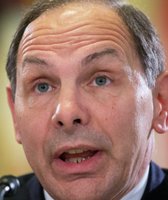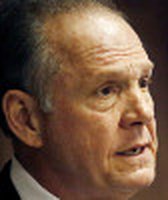Stand up for the facts!
Our only agenda is to publish the truth so you can be an informed participant in democracy.
We need your help.
I would like to contribute
President Barack Obama’s second-term promise to tackle climate change has clashed with election-year politics.
Much of the political debate has focused on the Environmental Protection Agency’s newly proposed regulations on existing power plants. If enacted, the rules would curb carbon emissions that scientists say cause global warming.
Misinformation about these new regulations started even before the EPA released them.
In the days leading up to the EPA’s June 2 announcement, the U.S. Chamber of Commerce released a study saying the regulations -- which hadn’t even been made public at that point -- would hurt jobs and economy.
The morning the EPA’s proposal was unveiled, House Speaker John Boehner’s website claimed, "The president’s plan would indeed cause a surge in electricity bills — costs stand to go up $17 billion every year. But it would also shut down plants and potentially put an average of 224,000 more people out of work every year."
Sign up for PolitiFact texts
Boehner’s evidence was the chamber study, but the study’s authors made several critical assumptions that turned out to be incorrect. For one, they assumed that the Obama administration would want to decrease carbon emissions by 42 percent — not 30 percent — before 2030.
When it comes to the pace for reducing CO2 levels, this is a significant difference. By assuming a much more difficult goal, the chamber also predicted that by 2022, the EPA would have to require natural gas plants to install carbon capture and storage, a much more costly technology, to reach the 42 percent threshold. The EPA already said last year that new natural gas plants would not need to include carbon capture in their facilities.
After the EPA released the rules the U.S. Chamber of Commerce told PolitiFact that its findings were no longer were applicable. But that didn’t stop politicians from citing them.
Because the numbers were based on a study with deeply flawed findings, we rated Boehner’s statement False.
Similarly, Ed Gillespie, a Republican challenging Democratic Sen. Mark Warner in Virginia — a state with close ties to the coal industry in its western half — claimed the EPA regulations would kill "244,000 jobs a year" and cost average families "$1,200 a year."
He also cited the Chamber study and Gillespie’s statements earned False ratings on the Truth-O-Meter as well.
In coal-rich Appalachia, Republicans — and even some Democrats — have lashed out at the Obama administration, saying in ads that a "war on coal" will close down mines and power plants across the region.
Both candidates running to replace retiring Sen. Jay Rockefeller, D-W.Va., have criticized Obama’s proposal. But a midsummer campaign ad from the Republican in the race, Rep. Shelley Moore Capito, went too far on a couple counts.
Capito claims the EPA’s June regulations mean "you're not even going to be able to burn coal very limitedly in the existing plants."
Taken literally, this is quite false. The rules don’t keep plants from burning coal.
The EPA proposal sets a different carbon reduction threshold for each state based on feasibility, cost and current pollution levels, to help achieve a 30 percent reduction in carbon emissions nationally by 2030.
To reach their respective goals, each state can choose from a multitude of options, including regional cap and trade networks, investments in renewable energy and building smart grid technology.
And, yes, they could phase out some existing coal plants.
Experts noted, though, that the goals are phased in gradually and can be met without stopping many plants from burning coal, even in states heavily reliant on fossil fuels.
"We’re going to see a shakeout of older and smaller coal plants, the least efficient ones anyway," said Dallas Burtraw, associate director of the Resources for the Future Center for Climate and Electricity Policy, an energy think tank funded by government, nonprofits and energy companies. "The ones that remain will have a high level of environmental controls and will run relatively efficiently with a high utilization rate."
As for Capito’s claim that regulations will stop existing plants from burning coal, we rated the statement False.
Capito also took a shot at a separate EPA proposal released last year to regulate emissions from new coal plants, claiming the rule says, "No new coal-fired plants."
Under the proposed guidelines, coal-burning power plants would have to limit carbon emissions to 1,100 pounds per megawatt hour over a 12-operating month period. Natural gas plants, meanwhile, would have to stay below 1,000 pounds of carbon per megawatt hour.
Modern natural gas plants already meet that standard, but so far even the most efficient coal plants in operation are well above the EPA’s proposed threshold. To meet it will require carbon capture technology, which is not commercially available.
But it will be some day, experts said. Already there is one ongoing attempt to build a coal plant with carbon capture in Mississippi.
And in the meantime, it was very unlikely any new traditional coal plants were on the horizon anyway, because a natural gas boom in North America has steered power companies away from coal and toward natural gas, which is cheaper, cleaner and more efficient.
At some point, experts expected coal to rebound.
"Wind and solar have benefits, but they’re intermittent. Natural gas is subject to all sorts of price volatility, at least historically, and it’s subject to hurricanes that can cause disruption," said Michael Webber, deputy director of the Energy Institute at The University of Texas at Austin. "So people will see coal is domestic, it has value, it’s not as volatile, it’s stable, but you just can’t burn it the way you did before."
We rated Capito’s statement that there will be no new coal plants Mostly False.
Not every politician is running to coal’s rescue. Sen. Sheldon Whitehouse, a Rhode Island Democrat who delivers a weekly floor speech about the dangers of climate change, wrote in May that there "are already more American jobs in the solar industry than in coal mining."
Whithouse was correct: The Bureau of Labor Statistics counted about 78,500 coal-mining jobs in the United States while the U.S. Mine Safety and Health Administration cited 123,227 jobs in its own report.
It’s a large gap, but both figures are still lower than the total number of solar jobs. According to the Solar Foundation, a pro-solar nonprofit that nonetheless is considered the "most authoritative" source by the Congressional Research Service, there were 142,698 Americans working in the solar industry as of November 2013.
PolitiFact Rhode Island, therefore, rated Whitehouse’s claim True.
Our Sources
PolitiFact, "Will EPA regulations stop plants from burning coal, like Shelley Moore Capito says?" Aug. 7, 2014
PolitiFact, "West Virginia Senate candidate says Barack Obama is banning new coal power plants," Aug. 7, 2014
PolitiFact, "Gillespie says EPA carbon rules will kill 244,000 jobs a year and hike bills by $1,200," June 9, 2014
PolitiFact, "Boehner: Obama's climate change policies will kill 224,000 jobs and surge electric bills by billions," June 2, 2014
PolitiFact, "It's EPA vs. U.S. Chamber of Commerce over climate change," May 30, 2014
PolitiFact, "Sen. Sheldon Whitehouse says there are more U.S. jobs in solar industry than coal mining," July 6, 2014
Phone interview with Dallas Burtraw, director of the Center for Climate and Electricity Policy, Aug. 5, 2014
Phone interview with Michael Webber, deputy director of the Energy Institute at The University of Texas at Austin, Aug. 6, 2014



















































